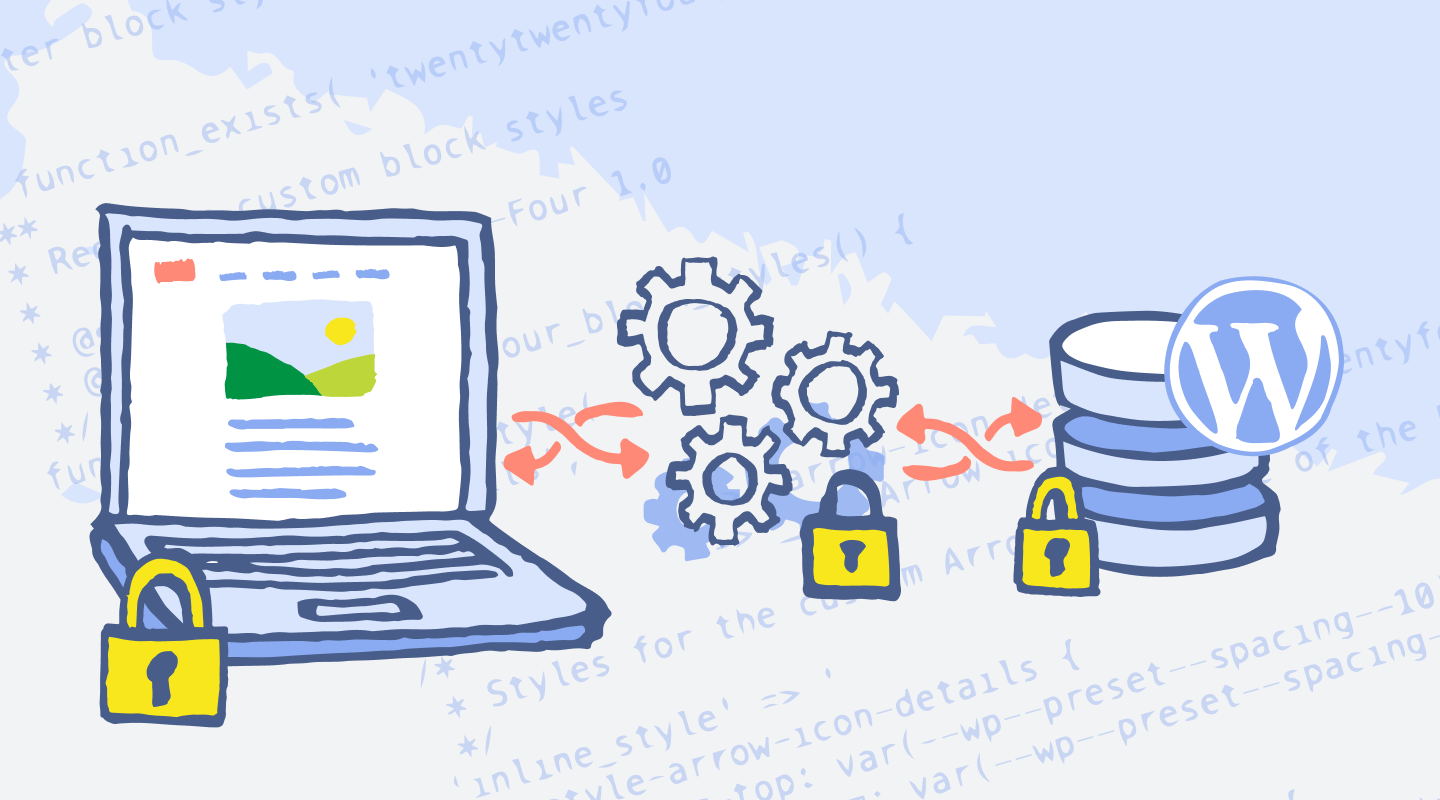
Cybersecurity: The Top Priority for Software Developers in an Era of Increasing Threats
Introduction to Cybersecurity
Cybersecurity has emerged as a crucial field in today’s increasingly digital world, where the reliance on software applications and online services continues to escalate. At its core, cybersecurity encompasses the practices and technologies designed to protect networks, systems, and data from unauthorized access, attacks, and damage. It is an essential component for maintaining the integrity, confidentiality, and availability of information, especially as cyber threats become more sophisticated and pervasive.
The importance of cybersecurity cannot be overstated, particularly for software developers who are tasked with building robust applications capable of resisting various cyber threats. With incidents of data breaches and cyberattacks on the rise, resulting in not only financial losses but also reputational damage, many organizations prioritize cybersecurity in their software development processes. Data from cybersecurity firms indicate that 40% of companies experienced at least one cyber incident in the past year, reiterating the urgent need for secure design principles from the outset.
Furthermore, the landscape of cyber threats continues to evolve rapidly. Attackers utilize increasingly sophisticated techniques such as ransomware, phishing, and advanced persistent threats (APTs) to exploit vulnerabilities in software. This pressing challenge underscores the critical role of software developers in implementing effective security measures throughout the software development lifecycle. By integrating security best practices and adopting a proactive approach to threat modeling, developers can create applications that not only meet functional requirements but also safeguard sensitive data from malicious actors.
As we delve deeper into the significance of cybersecurity in the realm of software development, it becomes apparent that collaborative efforts among developers, organizations, and stakeholders will be vital. Emphasizing a culture of security awareness and vigilance will ultimately contribute to a safer digital environment for users and organizations alike.
The Growing Landscape of Cyber Threats
In recent years, the landscape of cyber threats has become increasingly complex and multifaceted, posing significant challenges for software developers and organizations alike. Among the various types of threats, malware continues to be a predominant concern. This software can infiltrate systems, causing damage, stealing information, or even holding data hostage. According to cybersecurity reports, over 1 million new malware variants are released each day, underscoring the critical need for developers to implement robust security measures during the software development lifecycle.
Phishing attacks represent another prevalent threat, where attackers deceive individuals into providing sensitive information via deceptive emails or websites. A report from the Anti-Phishing Working Group (APWG) indicated that phishing attacks have surged, with an increase of over 30% annually. These attacks not only target individuals but also aim at organizations, leading to significant financial losses and data breaches. The rise of sophisticated phishing tactics demonstrates the urgent requirement for developers to ensure their applications possess strong security protocols and user education initiatives.
Ransomware has emerged as a particularly alarming cyber threat, whereby malicious actors encrypt an organization’s data and demand payment for its release. The Cybersecurity and Infrastructure Security Agency (CISA) reported that ransomware incidents have caused substantial disruptions across various industries, including healthcare and education, and can lead to millions of dollars in recovery costs. Such incidents highlight the importance of proactive cybersecurity strategies and the implementation of backup solutions to mitigate these risks.
Lastly, data breaches pose a continuous threat to organizations, often resulting in unauthorized access to sensitive information. According to the Identity Theft Resource Center, data breaches in 2022 reached an all-time high, affecting millions of individuals and enterprises. These statistics illustrate the pressing need for software developers to prioritize cybersecurity, ensuring adequate safeguards are in place to protect sensitive data from potential breaches and cyber threats.
The Role of Software Developers in Cybersecurity
In today’s digital landscape, software developers play a crucial role in cybersecurity. They act as the first line of defense against an array of evolving cyber threats. As the architects of software applications, developers are responsible for writing secure code that minimizes vulnerabilities and protects sensitive data from malicious access. This task entails not only adhering to established coding standards but also incorporating security practices throughout the software development lifecycle.
One primary responsibility of software developers is to conduct thorough testing to identify and mitigate potential security risks. This includes utilizing various automated tools to conduct static and dynamic analysis of the code, as well as performing rigorous penetration testing. By proactively identifying vulnerabilities before the software is deployed, developers can significantly reduce the likelihood of exploitation by cyber criminals. Recognizing the importance of these practices, many development teams are now advocating for a security-first mindset, often referred to as DevSecOps, integrating security measures directly into their development processes.
Moreover, as cyber threats continue to evolve, the requirements for software maintenance become increasingly demanding. Developers must continuously update software to address new vulnerabilities and patch any identified security gaps. This involves monitoring industry developments, employing best practices, and remaining vigilant about emerging threats. Regular updates not only enhance the security posture of applications but also provide users with greater reassurance regarding their data’s safety.
Ultimately, the engagement of software developers in cybersecurity is an indispensable element in safeguarding digital assets. Their expertise not only ensures that applications are built with strong security foundations, but it also fosters a culture of accountability and proactive risk management. With the ever-increasing sophistication of cyber threats, the role of developers in this realm cannot be overstated.
Best Practices for Developing Secure Applications
In the rapidly evolving field of technology, the significance of cybersecurity in software development cannot be overstated. To mitigate potential security threats, developers must implement a variety of best practices aimed at fostering secure application development. First and foremost, adopting secure coding standards is essential. These standards serve as a foundation for writing robust code and help prevent vulnerabilities by equipping developers with guidelines for safe coding practices. By adhering to established frameworks, such as the Open Web Application Security Project (OWASP) guidelines, developers can significantly decrease the likelihood of security breaches.
Another key component of secure application development is conducting regular code reviews. Code reviews not only enhance the overall quality of the code but also allow team members to identify potential vulnerabilities before they escalate into larger issues. Encouraging collaboration and requiring peer assessments ensures that security considerations are integrated into the development process from the outset. Furthermore, code reviews act as an educational opportunity for developers to share knowledge and develop a deeper understanding of secure coding techniques.
Utilizing encryption is also critical when creating secure applications. By implementing encryption protocols, developers can safeguard sensitive data, both at rest and in transit. Proper encryption mitigates the risk of unauthorized access, ensuring the confidentiality and integrity of user information. Furthermore, utilizing frameworks that offer built-in encryption capabilities can streamline the process, enabling teams to focus on other aspects of development.
Lastly, it is vital to incorporate security measures at every stage of the software development lifecycle (SDLC). By considering security from planning through deployment and maintenance, developers can create a security-conscious environment that proactively addresses potential threats. Continuous security assessments, rigorous testing, and timely updates further contribute to the resilience of applications against evolving cybersecurity risks.
The Importance of User Data Protection
User data protection is a vital component in the software development landscape, especially given the increasing frequency and sophistication of cyber threats. Software developers bear a significant responsibility in safeguarding personal information collected from users. Failing to adequately protect user data can lead to serious legal implications, including non-compliance with regulations such as the General Data Protection Regulation (GDPR) and the California Consumer Privacy Act (CCPA). Violations of these data protection laws can result in hefty fines, lawsuits, and long-term damage to a company’s reputation.
Moreover, the loss of user trust can have profound consequences for software developers and their organizations. When data breaches occur, users often feel vulnerable and betrayed, which can lead them to abandon a product or service. A tarnished reputation can take years to rebuild, if at all, making user data protection not just a technical issue but a business imperative. As developers create applications, they must adopt stringent data governance practices that prioritize user privacy at every stage of the software development lifecycle.
Financial repercussions are another significant concern in the realm of data protection. A data breach can lead to direct costs, such as remediation efforts and legal fees, as well as indirect costs that pertain to lost business opportunities and diminished customer loyalty. These financial strains can impact not only a company’s bottom line but also its overall stability. Therefore, developers must proactively implement robust security measures, such as data encryption, secure access controls, and regular security audits, to mitigate the risks associated with data breaches.
Given the growing emphasis on data privacy, it is clear that prioritizing user data protection is essential for developers. By embedding privacy considerations into their development processes, software engineers can not only safeguard user information but also enhance their organization’s integrity in a competitive market.
Emerging Technologies in Cybersecurity
In today’s rapidly evolving technological landscape, the significance of cybersecurity cannot be overstated. Emerging technologies such as artificial intelligence (AI), machine learning (ML), and blockchain play vital roles in augmenting cybersecurity measures. By leveraging these advanced tools, organizations can enhance their capabilities to predict, detect, and respond to cyber threats more efficiently.
Artificial intelligence has transformed the field of cybersecurity by facilitating sophisticated threat detection mechanisms. Utilizing AI algorithms, systems can analyze vast amounts of data at incredible speeds. These algorithms can identify patterns and anomalies that might suggest the presence of a cyber threat, significantly reducing the response time needed to address potential breaches. Furthermore, AI can continuously learn from new security incidents, refining its predictive capabilities over time.
Machine learning complements AI by enabling systems to improve their performance based on experience. ML algorithms can discern trends and adapt to new tactics used by cybercriminals. Through continuous learning, these systems can recognize and block malicious activities without human intervention, creating a proactive defense mechanism. This adaptive nature of machine learning helps organizations stay ahead in the ongoing battle against cyber threats.
On the other hand, blockchain technology offers an innovative approach to enhancing cybersecurity. Blockchain’s decentralized nature ensures that data integrity remains intact, providing a robust framework for secure transactions. This technology makes it particularly challenging for cybercriminals to alter or forge information, ensuring that data within the system is trustworthy. Industries such as finance and healthcare are increasingly adopting blockchain solutions to fortify their cybersecurity infrastructure.
As cyber threats become more sophisticated, the integration of technologies like AI, ML, and blockchain is becoming essential. These innovations not only bolster security measures but also empower software developers to create systems that respond dynamically to emerging cyber threats, thereby enhancing overall resilience against attacks.
Training and Awareness for Developers
In the rapidly evolving landscape of technology, the importance of ongoing education and awareness for software developers cannot be overstated, particularly in the realm of cybersecurity. As new threats continue to emerge, developers must remain proactive in their learning to effectively safeguard their applications and systems. Continuous training ensures that developers are equipped with the latest knowledge regarding potential vulnerabilities, attack vectors, and best security practices essential in today’s digital environment.
To facilitate this ongoing education, numerous resources and programs are available. Online platforms such as Coursera, Udemy, and Pluralsight offer specialized courses focused on cybersecurity fundamentals, secure coding practices, and the latest tools for threat management. Additionally, organizations can invest in subscriptions to cybersecurity training platforms like Cybrary or SANS Institute, which provide comprehensive, up-to-date content designed specifically for software developers.
Moreover, many developer communities and forums, such as Stack Overflow and GitHub, are valuable for sharing insights and experiences related to security challenges. Participating in these communities not only exposes developers to real-world situations but also fosters a collaborative mindset towards solving complex security issues.
In addition to formal training, organizations should promote awareness through regular workshops, webinars, and internal knowledge-sharing sessions. Implementing a culture of security within the development team enhances collective vigilance and response capability against potential threats.
Furthermore, staying informed about the latest security breaches and trends is vital for developers. Engaging with respected cybersecurity news outlets and participating in industry conferences can provide critical insights into emerging threats and effective countermeasures. By embracing a multifaceted approach to training and awareness, software developers can significantly enhance their capabilities in addressing cybersecurity risks, reflecting their integral role in protecting applications and data from increasing threats.
Future Trends in Cybersecurity for Software Development
The landscape of cybersecurity is continuously evolving, presenting a series of challenges and opportunities for software developers. As we look to the future, several trends are expected to significantly shape the cybersecurity framework surrounding software development. One prominent trend is the anticipated increase in regulatory requirements. Governments worldwide are likely to implement stricter regulations regarding data protection, privacy, and security standards. This evolution will compel software developers to integrate comprehensive security measures throughout the development lifecycle, ensuring compliance and protecting user data effectively.
Another notable trend is the rise of cybersecurity insurance. As cyber threats become more sophisticated, organizations are seeking to mitigate risks associated with potential breaches. Cybersecurity insurance will play a vital role in this strategy, providing financial support and risk management strategies for businesses. Software developers must understand the implications of such insurance policies on their projects, as they may need to design systems that not only meet regulatory standards but also align with the requirements set forth by insurers. This alignment will demand developers to adopt a proactive stance towards the creation of secure applications to minimize liability.
Furthermore, the evolution of cyber threats will remain a crucial aspect of the cybersecurity landscape. As attackers increasingly leverage advanced technologies and methodologies, software developers will need to remain informed and adaptive. This includes investing in continuous learning and staying updated on emerging threats, as well as integrating cutting-edge security practices into their development processes. The growing reliance on artificial intelligence and machine learning for both offensive and defensive strategies necessitates that developers understand these technologies deeply.
Ultimately, as the cybersecurity domain progresses, it is crucial for software developers to stay ahead of regulatory changes, embrace emerging cybersecurity practices, and prepare for the next generation of threats. Proactivity will be key in adapting to these developments, ensuring robust and secure software solutions in an ever-evolving technological landscape.
Conclusion: A Collective Responsibility
As we have explored throughout this discussion, the importance of cybersecurity in the realm of software development cannot be overstated. The ever-evolving landscape of cyber threats necessitates a robust commitment from all stakeholders involved in the software lifecycle. This commitment extends beyond developers to encompass organizations, users, and policymakers alike. Each group has a crucial role to play in fostering a secure digital environment, and collaboration is key to achieving this goal.
Software developers, while responsible for implementing secure coding practices and applying preventative measures against vulnerabilities, cannot shoulder this burden alone. Organizations must cultivate a culture of cybersecurity awareness, investing in training and resources that empower their employees to recognize and mitigate potential threats. Users, too, have a responsibility to engage with technology thoughtfully, understanding the importance of strong, unique passwords and reporting suspicious activities. Furthermore, policymakers play a pivotal role in establishing regulations and guidelines that shape industry standards aimed at safeguarding sensitive information.
It is vital to recognize that cybersecurity is not a one-time effort but a continuous process that requires vigilance and adaptive strategies. As the digital landscape grows more complex, the interconnectivity of devices and networks amplifies the potential for breaches. This interconnectedness calls for an integrated approach that prioritizes cybersecurity at every organizational level and within community practices. By uniting these efforts, we can create a resilient digital environment that not only guards against threats but also fosters innovation and trust.
In conclusion, embracing cybersecurity as a collective responsibility spearheaded by software developers, organizations, users, and policymakers is essential. Together, we can build a safer digital future that protects the integrity of our information and enhances our collective security posture.







